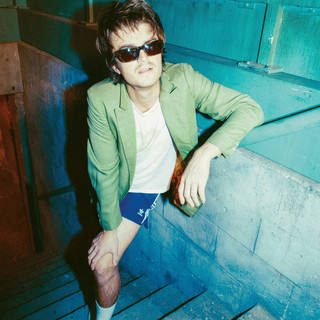On March 1, I had the pleasure of going to see jazz artists Miguel Zenón and Luis Perdomo perform their two-part EP, “El Arte Del Bolero,” here on Wellesley’s campus. As a member of the Wellesley Blue Jazz Band, I was thrilled to have spent the week rehearsing with Zenón to perform his piece “Oyelo” at the jazz showcase the previous night. Having such a skilled musician work with our group was inspiring in itself, but seeing the way these artists performed on-stage gave me a new sense of how beautiful jazz can be.
The duo began their performance with the first track on their EP, titled “Cómo Fue.” Zenón began the piece with a saxophone solo that demonstrated his dulcet tone and wide range of dynamics, while Perdomo joined on the piano. It’s clear Zenón possesses phenomenal control over his instrument, employing highly advanced scalar manipulation — the kind that elicits admiration from instrumentalists and untrained onlookers alike. The two performers complement each other extremely well, together having established a harmonious relationship that simultaneously showcases individual talents and their shared, unique blend. Perdomo played the piano with such grace, lightly grazing the keys with dexterity, but maintaining a strong command over them. The two musicians have mastered the opposing ends of their dynamic ranges, even making seamless transitions from pianissimo to fortissimo, very soft and very loud dynamic markings. The piece left me in awe and with a single question: how creative of a mind does it take to generate so many melodic ideas from one scale?
Zenón and Perdomo moved onto a medley of songs, which of course continued the night’s theme of unimaginably creative composition. Although my favorite aspect of Zenón’s playing is his ability to gracefully prance through scales, all the while ensuring each note works perfectly, he also excels at sustaining notes. This skill may sound simple, but its employment had, in fact, caused me to look up from my notepad several times in pure astonishment. Perdomo and Zenón both integrated runs into their melodic ideas perfectly: never showy or self-indulgent, but always supplemental to the art, supplying any given portion of a piece exactly what the audience didn’t know it needed. Additionally, it’s worth noting that neither musician had any sheet music in front of them. Still, both played with such confidence and expertise that, having never heard their music before, I had no way of knowing what was being played as written or completely improvised.
The artists played another assortment of pieces that was tender, very poignant, and just screamed “soul.” At risk of sounding like I’ve seen “La La Land” too many times, this is the kind of music that makes you appreciate jazz more. Zenón and Perdomo seemed to be in musical conversation with each other. Perdomo casually spanned half of the piano in approximately two beats and Zenón played with the tonguing and articulation every saxophonist dreams of (No, really, I will be booking a practice room after this). During “En La Soledad,” a dreamy, whirring piano introduction led to a controlled chaos in the middle portion of the piece. By the conclusion of the piece, urgency gave way to tranquility, all while maintaining the same passion that defined the night. The concert ended with “Silencio,” a groovy piece with a lively, fanciful feel and a funky time signature — boy, did this piece make me wish I paid more attention in MUS 220!
In between pieces, Zenón thanked the audience for “supporting live music,” and I couldn’t agree more. These kinds of concerts are what keeps music alive, as it’s not just notes on a page, or a song downloaded to a phone, but an experience with palpable energy shared among everyone in the room. Being able to visually see the music flowing through artists is rare, but I can say without a doubt that I saw it in Miguel Zenón and Luis Perdomo.



